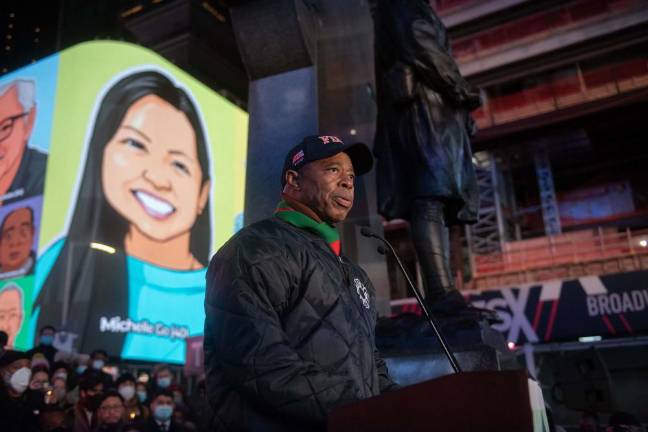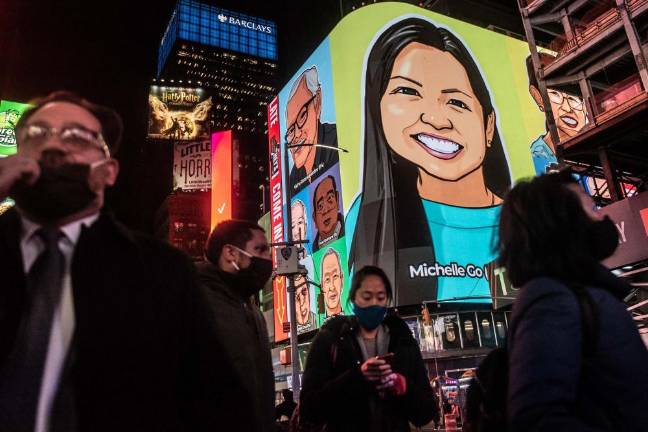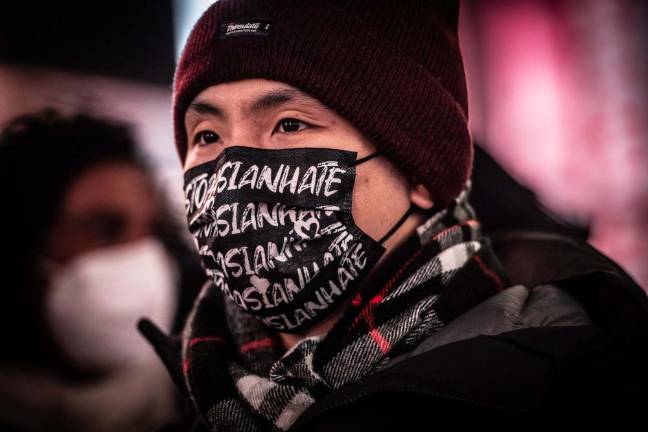In life, her friends say, she shunned any limelight on herself as she helped others less fortunate. So it was a painful irony that Michelle Alyssa Go’s death focused that light sharply on the great city’s struggle to crack down on heinous crimes while humanely treating the down and out, some of whom commit those crimes.
Go, who was 40 years old and lived on the Upper West Side, died under the wheels of an R train at Times Square when she was allegedly shoved off the platform by a homeless man, Martial Simon, 61, who had been in and out of both prison and psychiatric treatment for years.
“We failed him,” Lieutenant Governor Brian Benjamin said at a vigil for Go in Times Square, “as a result of our failing him, we failed Michelle.”
“We cannot allow our train system to be our mental health support system,” Benjamin added.
Letitia James, the state’s attorney general, invoked events now forty years in the past to put Go’s death in context. “New York State dumped millions of individuals on to our streets with no care,” she said. “And it’s time we addressed that and provide them with assistance.”
No one is proposing the widespread re-institutionalization of severely mentally ill people, although one of the policy prescriptions now on the table is an increase in psychiatric beds for those who require in-patient treatment.
“Our Greatest Fear”
It did not take long for New Yorkers to recognize the unsettling similarity between the death of Michelle Go and the death 23 years earlier of Kendra Webdale, 32 at the time, when she was shoved in front of an N train at 23rd Street by Andrew Goldstein, 29 who had a long history of schizophrenia and violence.
“Our greatest fear as a straphanger is being pushed onto the tracks,” Ben Wei, founder of Asians Fighting Injustice, said at the Times Square vigil his group organized for Go. “It lingers in the back of our brain to hear that happened to a member of our city, a member of our community. We are heartbroken.”
Webdale, like Go, had come to New York to pursue success. Her death, like Go’s, horrified the city. It also led to passage of what became known as Kendra’s law, which created Assisted Outpatient Treatment programs for mentally ill persons who, in the past, might have been institutionalized.
A judge can order participation in AOT in lieu of prison or as a condition for parole.
By all accounts these AOT programs have been successful at reducing violence by the mentally ill in New York and have been copied in most other states.
“You know, it’s a really good law,” Goldstein told New York magazine at the time of his release in 2018 after serving 19 years of a 23-year sentence. “Not like some totalitarian law where they could just throw you in a mental hospital.”
Urgent Question
But an urgent question around Michelle Go’s death is why Martial Simon, despite his long history of mental illness, was not, apparently, in such a program.
“AOT has surely prevented many tragedies over 23 years,” Brian Stettin, who helped draft Kendra’s law as an assistant New York Attorney General, wrote in the Daily News on Sunday. “And yet preventable tragedies involving individuals not on AOT keep mounting, while lost souls in florid psychosis remain a heartbreakingly routine spectacle across the city.”
AOT should be expanded, Stettin wrote, although “a top-to-bottom re-think of the entire mental health system’s priorities is overdue.”
In the meantime, New Yorkers are adopting the subway riders’ equivalent of defensive driving.
“With the death of MICHELE GO, by being pushed onto the subway tracks, I have taught myself some “tricks”, when I DO have to use the subway,” Debora Grant, a West Sider, shared on social media. “I stand near a pole with my back to the tracks, and giving myself a FULL half circle of vision!! I DON’T read my Cell at ANYTIME while waiting for the trains, NOR taking my eyes off my surroundings!!”
At the Times Square vigil Mayor Eric Adams said New Yorkers had to stay united around helping the mentally ill deal with their demons rather than demonizing them.
“We have to do this together,” he said. “I don’t want the knee jerk reaction of going through our subway system and going through our streets and demonizing those who have slipped through the cracks and did not receive the mental health treatment they deserved.”
“We cannot allow our train system to be our mental health support system.” Lieutenant Governor Brian Benjamin


